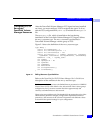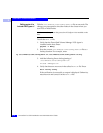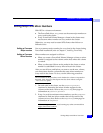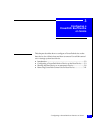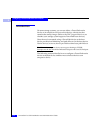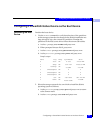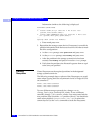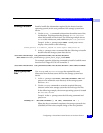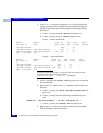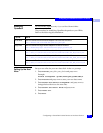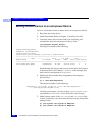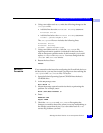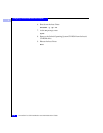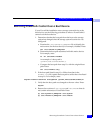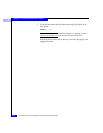
3
Configuring a PowerPath Native Device as the Boot Device
3-5
Configuring a PowerPath Boot Device on Solaris
Installing a Bootblk
Install a bootblk (the information required by the host to boot the
operating system) on the root partition of the storage system boot
device.
1. Use the
uname -a command to determine the architecture of the
workstation. This determines the directory in
/usr/platform
where the bootblk will be found. The following example shows
sun4u as the architecture, and subdirectory for /usr/platform.
Example: At the
%> prompt, enter uname -a and press ENTER to
display a line similar to the following:
SunOS patriot 5.8 Generic_108528-15 sun4u Sparc SUNW,Ultra-60
2. At the %> prompt, enter a command like the following to install a
bootblk onto the storage system boot device:
/usr/sbin/installboot /usr/platform/sun4u/lib/fs/ufs/bootblk\
/dev/rdsk/ccontroller_numbertstorage_system_device_target_numberd0s0
For example, enter the following command to install a bootblk onto a
boot device of Target 0 LUN 0 on controller 3:
/usr/sbin/installboot /usr/platform/sun4u/lib/fs/ufs/bootblk /dev/rdsk/c3t0d0s0
Copying Required
Files
Use ufsdump and ufsrestore to copy the required files and
directories from the host source drive to the storage system boot
device.
1. At the
%> prompt, enter mount /dev/dsk/c3t0d0s0 /mnt and
press
ENTER to mount the root directory of the storage system
device to
/mnt.
2. Use the
ufsdump command to create the required directory
structure on the new storage system device and copy the files.
In the following example, the current operating system is located
on
/dev/dsk/c0t0d0.
Example: At the
%> prompt, enter the following command and
press
ENTER:
ufsdump 0f - /dev/dsk/c0t0d0s0 |( cd /mnt; ufsrestore rf - )
When the above command completes, the storage system device
(c3t0d0s0) will have the complete image of the root partition.



